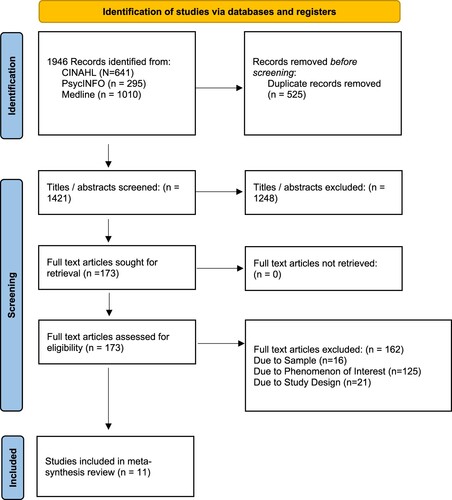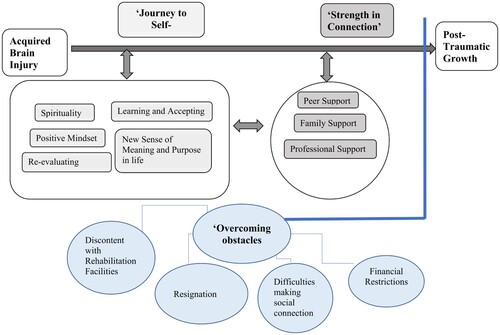Figures & data
Table 1. Search strategy: CINAHL (Ebscohost) date run: 27th December 2022.
Table 2. Summary information of studies included in the meta-synthesis.
Figure 1. Flowchart for thematic analysis process from familiarization to identification of analytical themes.

Figure 2. PRISMA flow diagram showing the study selection process for the meta-synthesis.

Figure 3. Pathway from acquired brain injury to post-traumatic growth and associated facilitators and barriers along that pathway.

Table 3. Sub-themes identified in each study sorted by analytical theme.
